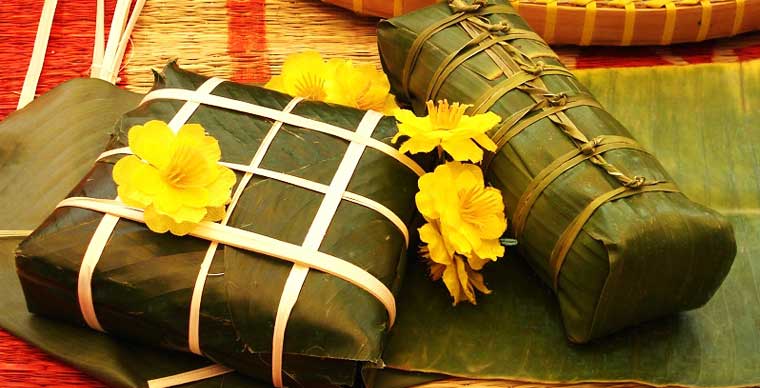
Learn about Tet: the Vietnamese New Year
- on Jan 24, 2018 By: Ngoc Tu DINH
For thousands of years, Tet—the Lunar New Year of Vietnam—has been considered one of the year's most important events for each family. Tet is not only a joyful occasion for family reunions but also a chance for Vietnamese people to express their gratitude to deities and ancestors.
In this article, you will learn the origin of Tet, widely known as the Vietnamese Lunar New Year, and how the Vietnamese celebrate it.
- 1 – Farewell ceremony for the Kitchen Gods
- 2 – House decoration
- 3 – Shopping for Tet
- 4 – Calligraphy
- 5 – Visiting ancestors’ tombs
- 6 – Make banh chung (sticky rice cake) and banh tet (cylindrical glutinous rice cake)
- 7 – The New Year’s Eve ceremony
- 8 – Picking buds or young leaves
- 9 – Visiting pagodas
- 10 – Xông đất – being the first footing
- 11 – Sharing greetings and wishes
- 12 – Giving lucky money
The origin of Tet
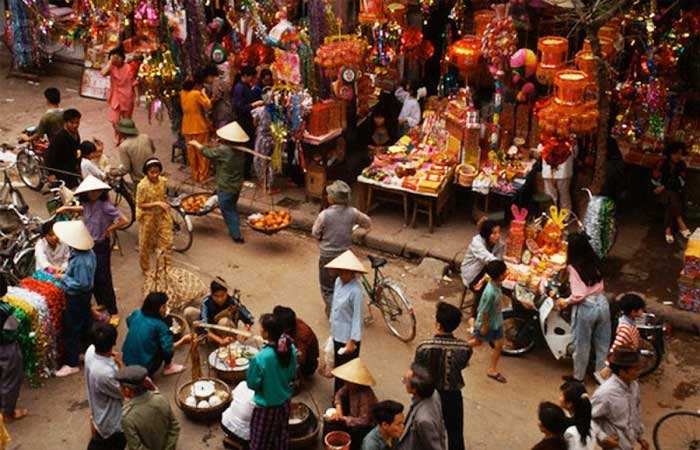
Local market before the Lunar New Year
Due to the 1000 years of Chinese colonization, it is usually misunderstood that the Vietnamese Tet has its origin from China. Nevertheless, in fact, before being controlled by the Chinese, the Vietnamese had already had their own civilization since the beginning of their establishment. During the Van Lang – Au Lac regime, An Duong Vuong had built up the ground of Vietnamese culture, including Tet as a celebration for the New Year occasion. As written in the tale “Banh Chung Banh Day” – the symbol of “Round Sky and Square Land”, it has been believed that the Tet occasion has its origin in Vietnam. The lunar calendar is based on observation of the lunar cycle; therefore, Tet usually comes after the Western New Year (1/1). Tet is often celebrated in Vietnam between the end of January and the beginning of February, lasting from the 23rd of December to the 7th of January in the Lunar Calendar.
The meaning of the Tet holiday and how the Vietnamese celebrate it
Tet is an occasion for family reunion and new commencement, and therefore, it is full of hope and optimism. Depending on each region or different religion in Vietnam, the celebration of Tet can be varied. However, in general, Tet can be divided into 3 periods: “Tất niên” – before New Year’s Eve, “Giao thừa” – New Year’s Eve, and “Tân niên” – the New Year. Each period corresponds to different preparations, rituals, and customs.
1 – Farewell ceremony for the Kitchen Gods
On December 23rd (Lunar Calendar), Vietnamese families will clean their kitchens to prepare for the farewell ceremony for the Kitchen Gods. According to traditional rituals, some goldfish will be released to bring the Kitchen Gods to Paradise; hopefully, the Kitchen Gods will report positively to the Jade Emperor what happened in the family kitchen within one year.
2 – House decoration
Cleaning house before Tet is meant to say goodbye to the bad things that happened during the year and welcome a whole new year, hopefully with luck and success. On this occasion, all the furniture will be cleaned. New decorations will be displayed, and new bowls will be used. Besides, Vietnamese people will try to return all their debts because it is believed that debts will bring bad luck and risks for the new year.
3 – Shopping for Tet
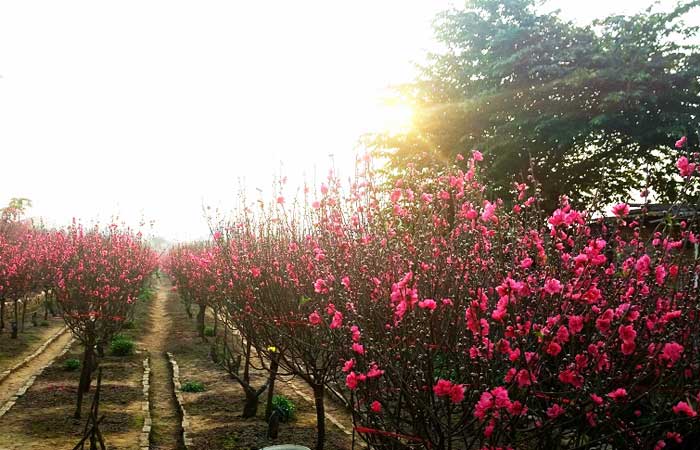
Besides buying necessary ingredients for preparing food during Tet, such as phrynium leaves, fatty pork specks, and pickled welsh onion to make banh chung (sticky rice cake) and participate in the New Year Eve’s ceremony, peach blossom, apricot blossom, amplexicaul tea, sword lily, and dahlia are favored for decoration during the Tet holiday as they represent prosperity, peace, and luck.
4 – Calligraphy
Having a new calligraphic work is another popular activity of Vietnamese people during the Tet holiday. This can be a word or a phrase that represents their wishes. The most favorite words are Moral, Happiness, Fortune, Peace, and Luck.
5 – Visiting ancestors’ tombs
Before Tet, family members reunite to visit and take care of their ancestors’ tombs. Each family brings along incense sticks, flowers, and fruits to honor their ancestor spirits. This is also an occasion for family members to recall the remarkable memories of the year and hope for a new year with positivity.
6 – Make banh chung (sticky rice cake) and banh tet (cylindrical glutinous rice cake)
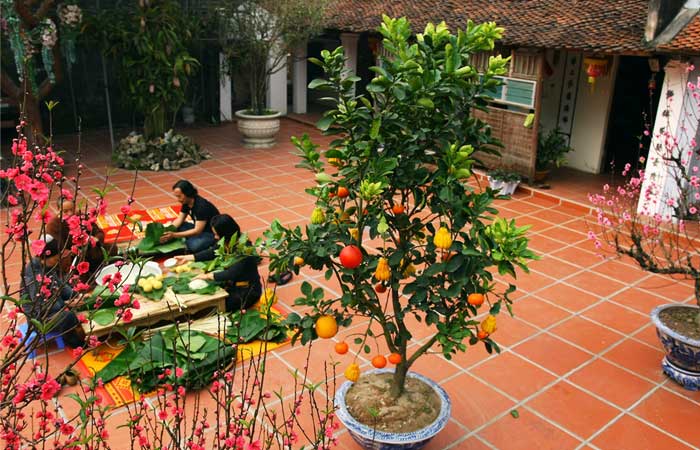
Making Chung cake is a custom existing from the Hung Vuong 18th civilization. Usually on December 28th and 29th in the Lunar Calendar, family members will make Chung cake and Tet cake together for the holiday or gift them to their friends and relatives. It requires a set of good skills and techniques to make beautiful and delicious rice cakes. If a cake is not made carefully or covered properly, it may be broken or become too soft.
7 – The New Year’s Eve ceremony
The New Year’s Eve ceremony includes 2 sessions: one inside and one outside. Vietnamese people undertake this ceremony with the belief that each year has its beginning and ending. The ceremony also means to remove all resentments and welcome a new year with blessing and luck.
8 – Picking buds or young leaves
After the New Year’s Eve ceremony, Vietnamese people will choose a propitious hour to go out and pick buds or young leaves with the hope that there will be a lot of luck and satisfaction for the new year.
9 – Visiting pagodas
To Vietnamese people, visiting pagodas during the Tet holiday is not only to express their wishes but also to find peace after a hard and stressful year of working. With the calm and peaceful environment in pagodas, they hope to forget all the sadness and worries after the previous year and find peace in their souls.
10 – Xông đất – being the first footing
Vietnamese people believe that the first person who visits their house after the Lunar New Year’s Eve ceremony will decide their destiny within one year, in terms of happiness, luck, and prosperity. Therefore, they usually carefully choose this person based on their background and their age match. The first foot must wear appropriate clothing and walk around the house hoping their actions will bring good luck to the family they are visiting.
11 – Sharing greetings and wishes

It can be considered that giving wishes during the Tet holiday is a unique and indispensable cultural custom in Vietnam. When giving wishes, everyone will dress up in nice clothes, usually in red, and bring along some gifts to the family that they visit. There is a saying for the Vietnamese Tet holiday: “The first day of Tet is for the father, the second is for the mother, and the third is for teachers. Father is the representative of his family's side, mother is the representative of her family's side, and teachers are the representatives of the people who teach and bring us knowledge.
12 – Giving lucky money
During the Tet holiday, Vietnamese adults usually give lucky money to children with the wish that they will always be happy, lucky and achieve good results in their studies. Red envelopes symbolize luck, happiness, and prosperity. In Vietnamese culture, all the people who have not yet gotten married will still can receive lucky money.
Related articles:
>> Preparations for the traditional Tet, the Vietnamese New Year
>> 4 traditional Hanoi flower markets to see when Tet approaches
 Español
Español Français
Français
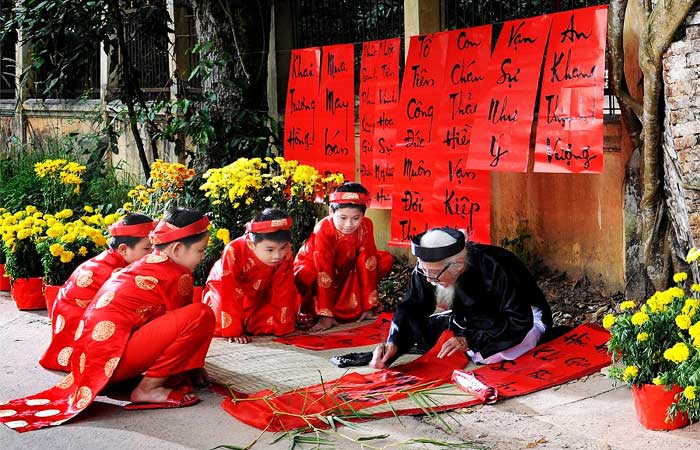






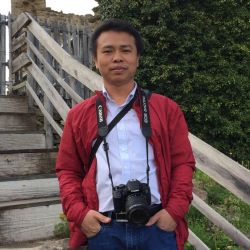
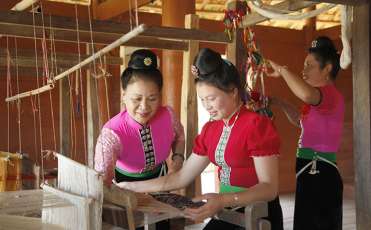
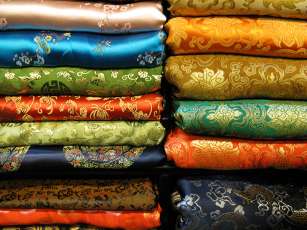
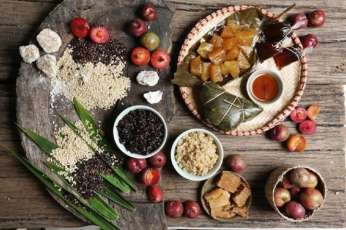
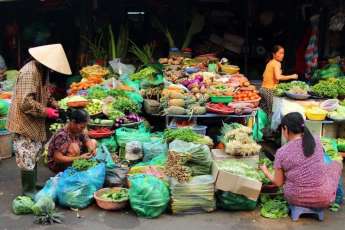
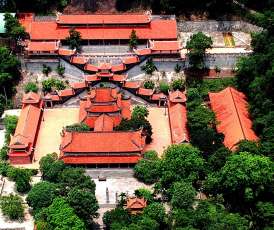








TraZefUK
on Nov 28, 2025HerbertPhomaMS
on Oct 19, 2025Lilyan Cuttler
on Oct 15, 2025Avenue17XC
on Sep 14, 2025Avenue18JL
on Jul 21, 2025